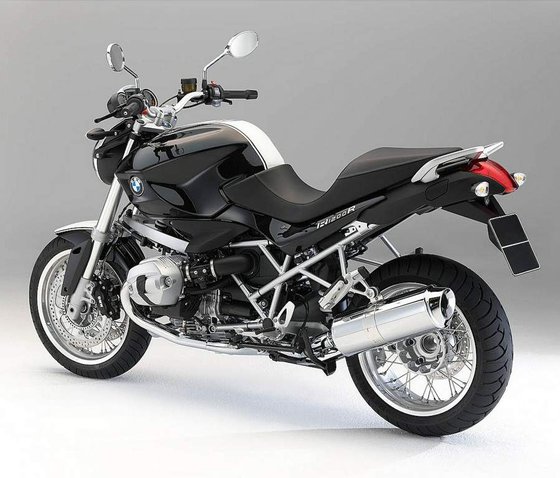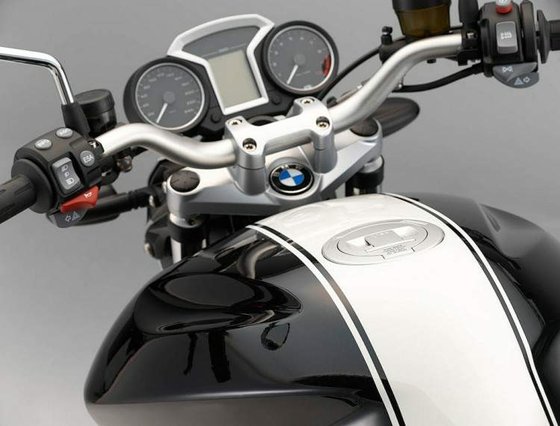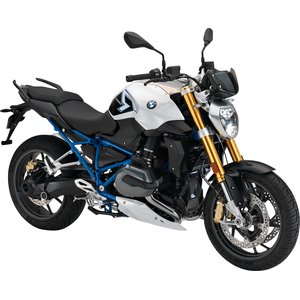BMW R 1200 R (2009–2014): The Boxer Roadster That Redefines Versatility

When BMW introduced the R 1200 R in 2006, it was already clear this wasn’t just another roadster—it was a statement. By the 2009 model year, the R 1200 R had evolved into a refined, multifaceted machine that combined Bavarian engineering with a dose of rebellious charm. For riders seeking a motorcycle that could carve mountain passes, commute through urban sprawl, and tackle weekend tours with equal flair, the R 1200 R became a benchmark. After spending time with this generation, it’s easy to see why it remains a cult favorite among riders who value substance over trends.
Design & Ergonomics: A Naked Bike with Purpose
The R 1200 R’s design is a masterclass in minimalist functionality. Unlike its fully faired siblings, this roadster puts its mechanical heart on display—the iconic 1170cc boxer engine dominates the profile, flanked by a tubular steel frame and minimalist bodywork. The 800 mm (31.5") seat height is accessible for most riders, and the upright riding position strikes a balance between sporty aggression and all-day comfort.
BMW offered two distinct flavors: the standard R 1200 R with cast alloy wheels and a brushed stainless steel exhaust, and the R 1200 R Classic, which leaned into nostalgia with wire-spoke wheels, chrome accents, and a two-tone paint scheme. Both versions shared a remarkably clean cockpit, featuring analog gauges for speed and RPM, plus a digital display for gear position, fuel range, and temperature.
Standout Feature: The Classic model’s chrome exhaust and alpine white tank stripe gave it a retro-modern aesthetic that still turns heads today.
Engine & Performance: Torque for Days
At the core of the R 1200 R is its air/oil-cooled boxer twin, a 1170cc powerhouse delivering 109 hp @ 7,750 rpm and 119 Nm (88 lb-ft) of torque @ 6,000 rpm. These numbers don’t scream “hyperbike,” but the real magic lies in how the power is delivered. From as low as 2,500 rpm, the boxer pushes forward with a gruff, mechanical urgency that makes overtaking effortless.
- 0–100 km/h (0–62 mph): 3.4 seconds
- Top speed: 220 km/h (137 mph)
The engine’s DOHC architecture (introduced in 2010) sharpened throttle response, while the optional Automatic Stability Control (ASC) added confidence in wet conditions. The six-speed transmission is butter-smooth, and the shaft drive eliminates chain maintenance—a boon for touring riders.
Riding Impression: The boxer’s character is unmistakable. At idle, the engine rocks gently beneath you, but twist the throttle, and it transforms into a torque-rich companion. The exhaust note—enhanced by an electronically controlled flap—growls under acceleration yet stays civil at cruising speeds.
Handling & Suspension: Telelever Wizardry
BMW’s Telelever front suspension and Paralever rear setup define the R 1200 R’s handling. The 41 mm Telelever fork (upgraded from 35 mm in earlier models) minimizes dive under braking, while the Paralever single-sided swingarm keeps the rear planted. With 120 mm (4.7") of front travel and 140 mm (5.5") at the rear, the bike soaks up bumps without sacrificing cornering precision.
- Wet weight: 223 kg (492 lbs)
- Fuel capacity: 18 L (4.7 gal)
The steering geometry (62.9° head angle, 119 mm trail) strikes a near-perfect balance between stability and agility. Push it into a corner, and the bike leans with neutral poise, aided by sticky 120/70-17 front and 180/55-17 rear tires.
Optional ESA: The Electronic Suspension Adjustment (ESA) allowed riders to tweak damping and preload on the fly—a rarity in this segment at the time.
Technology & Safety: Ahead of Its Time
While the R 1200 R avoided excessive gadgetry, it packed thoughtful tech:
- Partial Integral ABS: Linked front/rear braking with independent circuits (no unwanted rear brake intervention).
- Heated grips: A lifesaver for chilly morning rides.
- On-board computer: Track fuel efficiency, range, and ambient temperature.
The ABS system, weighing just 3 lbs, was a leap forward from BMW’s older setups, offering strong stopping power without the “wooden” feel of earlier iterations.
Competition: How Does It Stack Up?
In the 2010s naked bike arena, the R 1200 R faced fierce rivals. Here’s how it held its ground:
1. Ducati Monster 1200 S
- Pros: 145 hp, razor-sharp handling, premium components.
- Cons: Higher maintenance (desmo valves), firm seat, chain drive.
- Verdict: The Monster is a thrill machine, but the BMW’s low-end torque and shaft drive make it more practical for daily use.
2. Triumph Speed Triple
- Pros: 133 hp, iconic design, agile chassis.
- Cons: Harsh ride on rough roads, frequent chain adjustments.
- Verdict: The Speed Triple excels in urban hooliganism, but the R 1200 R’s suspension and touring comfort are unmatched.
3. Yamaha FZ1
- Pros: 150 hp inline-four, budget-friendly.
- Cons: Bland character, peaky powerband.
- Verdict: The FZ1 is faster on paper, but the BMW’s boxer engine offers a more engaging ride.
Conclusion: The R 1200 R isn’t the fastest or lightest, but its blend of torque, comfort, and low-maintenance engineering made it a unique proposition.
Maintenance: Keeping the Boxer Alive
Owners praise the R 1200 R for its robustness, but proactive care is key:
- Valve adjustments: Every 10,000 km (6,200 mi). Intake: 0.15 mm (0.006"), exhaust: 0.30 mm (0.012").
- Oil changes: 4.0L of SAE 15W-50 every 6,000 km (3,700 mi).
- Shaft drive: Replace final drive oil (180 mL of 75W-90) annually.
- Tire pressure: 2.2 bar (32 psi) front / 2.5 bar (36 psi) rear (solo riding).
Pro Tip: The horizontal cylinders can make spark plug swaps tricky—opt for a flexible socket wrench.
MOTOPARTS.store Recommendations:
- NGK DCPR8EKC spark plugs for smooth cold starts.
- BMW-approved DOT 4 brake fluid to maintain ABS performance.
- Upgrade to a high-flow air filter for sharper throttle response.
Final Thoughts
The BMW R 1200 R (2009–2014) is a testament to the idea that motorcycles don’t need to specialize. It’s a jack-of-all-trades that masters the art of riding joy—whether you’re threading through traffic, scraping pegs on a backroad, or logging highway miles. With its charismatic engine, premium suspension, and timeless design, this Boxer remains a compelling choice for riders who refuse to be pigeonholed.

Whether you’re restoring a Classic model or upgrading your R 1200 R with performance parts, MOTOPARTS.store has the OEM and aftermarket solutions to keep your Boxer roaring.






















Specifications sheet
| Engine | |
|---|---|
| Stroke: | Four-stroke |
| Battery: | 12V 14Ah maintenance-free |
| Max power: | 81 kW | 109.0 hp |
| Alternator: | Three-phase 720 W |
| Max torque: | 120 Nm |
| Fuel system: | Electronic intake manifold injection (BMS-K) |
| Max power @: | 7750 rpm |
| Displacement: | 1170 ccm |
| Max torque @: | 6000 rpm |
| Configuration: | Oposite |
| Cooling system: | Air/Oil-cooled |
| Compression ratio: | 12.0:1 |
| Number of cylinders: | 2 |
| Dimensions | |
|---|---|
| Wheelbase: | 1495 mm (58.9 in) |
| Dry weight: | 198 |
| Wet weight: | 223 |
| Seat height: | 800 mm (31.5 in) adjustable to 750-830 mm |
| Overall width: | 906 mm (35.7 in) |
| Overall height: | 1273 mm (50.1 in) |
| Overall length: | 2145 mm (84.4 in) |
| Ground clearance: | 165 mm (6.5 in) |
| Fuel tank capacity: | 18 L (4.76 US gal) |
| Drivetrain | |
|---|---|
| Final drive: | shaft |
| Gear ratios: | ['1st 2.375', '2nd 1.696', '3rd 1.296', '4th 1.065', '5th 0.939', '6th 0.848'] |
| Transmission: | 6-speed manual |
| Electrical | |
|---|---|
| Headlight: | 55W H7 low beam / 5W parking light |
| Tail light: | LED |
| Instrumentation: | Analog tachometer + digital speedometer with onboard computer |
| Maintenance | |
|---|---|
| Engine oil: | 15W50 |
| Brake fluid: | DOT 4 |
| Gearbox oil: | 0.9 L SAE 75W-90 GL-5 |
| Spark plugs: | NGK DCPR8EKC / DCPR8EIX |
| Final drive oil: | 0.18 L SAE 75W-90 GL-5 |
| Forks oil capacity: | 0.92 |
| Engine oil capacity: | 4.0 |
| Engine oil change interval: | Every 5000 km or 2 years |
| Valve clearance (intake, cold): | 0.13–0.23 mm |
| Valve clearance check interval: | 24,000 km (15,000 mi) |
| Valve clearance (exhaust, cold): | 0.30–0.40 mm |
| Recommended tire pressure (rear): | 2.9 bar (42 psi) solo |
| Recommended tire pressure (front): | 2.5 bar (36 psi) |
| Chassis and Suspension | |
|---|---|
| Frame: | Tubular steel spaceframe with load-bearing engine |
| Rear tire: | 180/55-z-17 |
| Front tire: | 120/70-z-17 |
| Rear brakes: | Single 265mm disc, 2-piston caliper (ABS optional) |
| Front brakes: | Dual 320mm discs, 4-piston calipers (ABS optional) |
| Rear suspension: | Paralever single-sided swingarm, adjustable preload and rebound damping |
| Front suspension: | BMW Telelever, 41mm stanchions, central spring strut |
| Rear wheel travel: | 140 mm (5.5 in) |
| Front wheel travel: | 120 mm (4.7 in) |



















